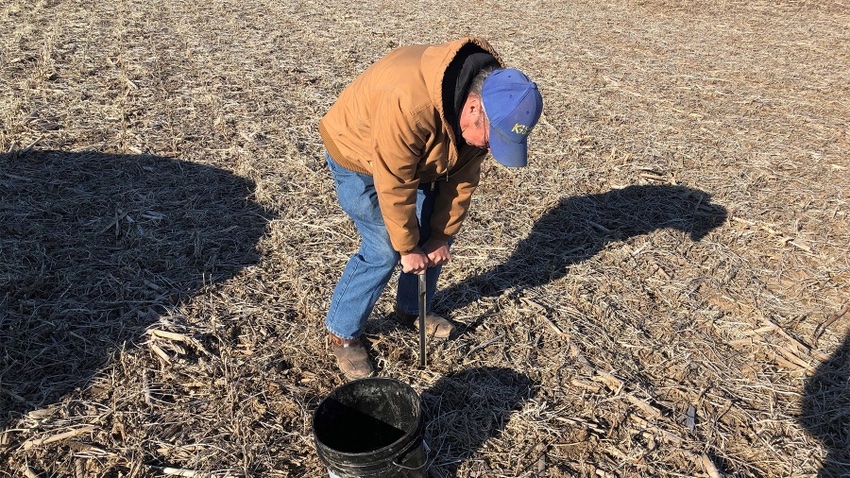Seek out soybeans’ silent yield robber

We haven’t seen visible signs of cyst nematode issues, but our soybean yields topped out at 70 bushels per acre. Should we test for nematodes? If so, when and how? What do results mean?
The Indiana certified crop advisers panel answering this question includes Steve Gauck, regional agronomy manager for Beck’s, Greensburg; Bryan Overstreet, Conservation Cropping Systems Initiative agronomist, Valparaiso; and Dan Ritter, central region agronomist, Dairyland Seed.
Gauck: Soybean cyst nematodes are the most damaging pest for yield loss. Many fields have them, but on differing levels. By testing, you can set a plan for future soybean crops in fields with higher levels of nematodes. Sample as soon as possible after harvest and within 2 inches of the soybean row. SCN populations tend to be sporadic around the field, so break the field into 20-acre zones and take 10 to 20 cores in each zone.
If you have pockets of lower soybean yields, target sampling in good and bad areas to compare SCN levels. Take your samples at a depth of 6 to 8 inches in the soybean root zone. Results will tell you if your egg counts of nematodes are low, medium or high. If levels come back high, visit with your agronomist about the best treatments. It is difficult to eradicate SCN, but you can manage them through crop rotation, no-till, genetic resistance and use of seed treatments.
Overstreet: Fall is an excellent time to sample for SCN in fields going into soybeans next spring. Take 10 to 20 cores, each 8 inches deep, in a 20-acre area to mix into a composite sample. Pull samples in a zigzag pattern in the sample area. High-risk areas such as field entrances or areas where yields were lower in the past may be the best places to sample.
Some labs report cysts, eggs or young nematodes. If the report is cyst number, these will contain the eggs too. There can be well over 100 eggs per cyst. Even if you get a negative result in testing, there still may be cysts in the field that you did not find. If you find cysts or eggs, use resistant varieties, if possible. Keep your fertility high, especially potassium levels.
Ritter: Yes, I would test for soybean cyst nematodes. They don’t call SCN the silent robber for nothing. SCN will slowly and quietly steal yield in certain cases. However, in my mind, 70 bushels per acre is not a yield that is totally off trend. For your operation, if these yields are off pace, then certainly be looking for issues.
Start by pulling soil cores at the 4-inch to 6-inch depth in a random pattern across the field. Testing can be performed nearly any time of the year. Purdue University information suggests that a low-level infestation is 200 eggs or 1 full cyst per 100 cubic centimeters of soil; medium is 200 to 2,000 eggs or 1 to 10 cysts per 100 cc of soil; and a high level of infestation is more than 2,000 eggs per 100 cc of soil. Several Midwest universities and soil labs have SCN testing capabilities. A simple internet search will help find the most convenient lab for you.

